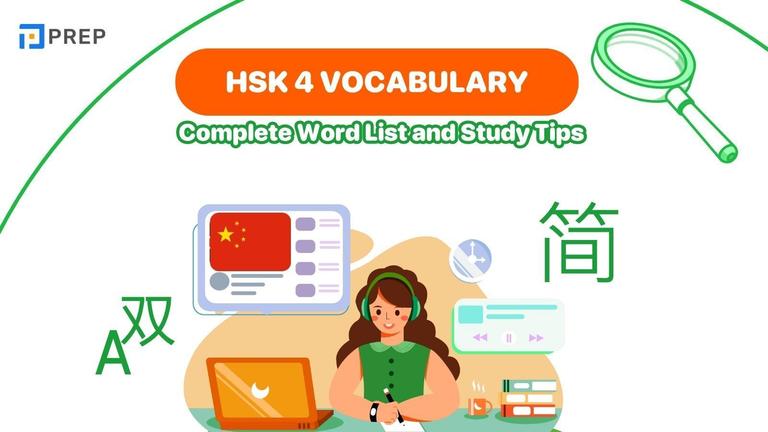How to Use Not Until in English Sentences Correctly
The phrase “Not Until” is a common English grammar structure used to express that an action happens only after another event occurs. In this guide, you’ll learn its meaning, sentence structure, inversion rules, common mistakes, and how to use it naturally in exams like IELTS.

I. What Is “Not Until”?
"Not until" is a subordinating conjunction used to express that an action or event does not happen or will not happen before a specific point in time or until another action occurs. It emphasizes a delay, often highlighting the condition that must be met before something takes place.
The phrase generally adds focus to the dependency or consequence between two actions. In other words, it means “only after” something happens, then another thing can happen.
Example:
She didn’t realize the truth not until it was too late.
➝ She only realized the truth after it was too late.
Grammatical Role: Subordinating Conjunction
“Not until” introduces a dependent (subordinate) clause that sets the time or condition under which the main clause becomes true or complete.
- Subordinate clause: Not until I saw the photo
- Main clause: did I remember the moment
This use often leads to inversion in formal or written English, especially when “Not until” is placed at the beginning of the sentence.
Not until I arrived at the station did I realize I had forgotten my wallet.
(Inversion occurs: "did I realize" instead of "I realized")
While both “until” and “not until” relate to time or conditions, “not until” carries a stronger emphasis on the absence or non-occurrence of the first action—often adding contrast or creating dramatic effect.

-
For time-related contrasts, explore when and while in English.
1. Grammar Structure and Inversion with “Not Until”
When using “not until” in English grammar, two common structures are possible: one without inversion (the neutral form) and one with inversion, which is more formal and often used at the beginning of a sentence.
Basic Structure of “Not Until” Sentences (No Inversion)
In regular statements, “not until” usually comes after the subject and is followed by a time expression or another clause. The sentence follows the standard subject–verb word order.
Subject + Verb + not until + [time clause]
Example: She didn’t leave the room not until the teacher finished speaking.
This form is common in spoken and informal English.
Inversion Rule with “Not Until” (Formal Writing or Emphasis)
When we move “not until” to the beginning of the sentence to emphasize the time clause, we invert the subject and auxiliary/modal verb in the main clause.
Not until + [time clause], + auxiliary/modal + subject + main verb
Example:
Not until the sun came out did they leave the shelter.
(Inverted: “did they leave” instead of “they left”)
Another example: Not until she apologized would he talk to her.
Key rules:
- Use an auxiliary verb (do/does/did, will, would, had...) in the main clause
- If the verb is to be, no auxiliary is needed (but still invert it):
Not until 1980 was the law changed.
Tense and Verb Agreement in “Not Until” Sentences
The verb tense in a “not until” sentence depends on the time relationship between the two clauses:
- For actions in the past, use did + base verb:
Not until he explained everything did I understand the problem. - For predictive or hypothetical situations, use would/could/should + verb:
Not until the final exam was over would she relax. - Use the present simple with does or do when necessary:
Not until she gets back does he make any decisions.
Be sure the subject–verb agreement is correct and ensure the main clause uses inversion only when “not until” is at the beginning.
Mastering inversion with “not until” not only improves your grammar accuracy but also adds variety and sophistication to your writing — especially useful in IELTS Writing Task 2 or TOEFL essays.

-
Learn to express purpose clearly with in order to and so as to.
2. Differences Between “Not Until” and Similar Structures
Although “not until” appears simple, it's often confused with related expressions such as “until”, “before”, or “only when”. Understanding the key differences in both meaning and structure will help avoid common grammar mistakes and improve writing precision.

|
Aspect |
Until |
Not Until |
Before |
Only When |
|
Function |
Describes a time boundary; an action continues up to a point |
Emphasizes delay or a condition before something happens |
Highlights that one action happened earlier than another |
Emphasizes a specific trigger that causes the main action |
|
Tone/Use |
Neutral, common in everyday language |
Emphatic, sometimes formal or dramatic |
Neutral and chronological |
Formal, logical (often used for cause-effect) |
|
Negation |
May or may not use “not” |
Always includes “not” |
Not necessarily negative |
Not necessarily negative |
|
Inversion |
Not used |
Often used when placed at the beginning of a sentence |
Inversion not typical |
Inversion frequently used in formal writing |
|
Time Relationship |
Action happens or continues until a time/event |
Action does not happen until a time/event occurs |
One action happens prior to another |
Main action happens only after a condition is met |
|
Example |
She stayed until 10 p.m. |
Not until 10 p.m. did she leave. |
She left before the movie ended. |
Only when I read it twice did it make sense. |
Summary Notes:
- "Not until" adds emphasis and a sense of delayed action, and is often used with inversion for stronger impact in writing or speech.
- "Before" focuses on sequential timing, rather than delay or condition.
- "Only when" adds a more logical or cause-effect tone, often used to stress a triggering condition for the main clause.
While these expressions may seem interchangeable in casual conversations, each has its own grammatical structure, tone, and appropriate context. Understanding their subtle differences helps learners write and speak with greater clarity and accuracy—especially in academic and test environments.
-
For more nuanced differences, see maybe and may be in English.
II. How to Use “Not Until” in English Exams
In English proficiency exams such as IELTS, TOEIC, or TOEFL, grammar accuracy and sentence variety are critical for achieving high scores—especially in the Writing and Speaking sections. Mastering the use of phrases like “not until” demonstrates a strong grasp of complex sentence structure, time references, and inversion, all of which are highly valued in academic and formal language contexts.
Beginner-Friendly Usage in Objective Grammar Tests
In exams like TOEIC or in the grammar sections of placement tests, "not until" may appear in fill-in-the-blank or sentence transformation questions.
Sample grammar test question:
I didn’t leave the office ___ 9 PM.
A. until
B. not until → (grammatically incorrect as a direct fill!)
Correct transformation-focused version:
___ 9 PM did I leave the office.
➝ Not until 9 PM did I leave the office.
Learners must understand how inversion works when “not until” appears at the sentence start.
Role of “Not Until” in IELTS or TOEFL Writing
In IELTS Writing Task 2, using "not until" strategically can help diversify sentence structure and show control over advanced grammar—especially when arguing a point or describing conditions.
Example in an IELTS essay:
Not until governments implement stricter regulations will pollution levels start to decrease.
This form:
- Demonstrates grammatical range (a key scoring criterion)
- Emphasizes cause-effect or delayed action
- Sounds formal and academic—appropriate for band 7.0+
Tips:
- Use sparingly—do not overcomplicate every sentence
- Ensure inversion is applied correctly
- Avoid confusing “not until” with “until” in essay writing
Using “Not Until” in Speaking (Controlled & Natural)
Though less common in everyday spoken English, using “not until” appropriately in test scenarios—like Part 2 or Part 3 of IELTS Speaking—can show fluency and coherence.
Example IELTS Speaking Part 2 (Narrative):
I didn’t feel confident in my English skills, not until I started using them at work.
With inversion (more advanced):
Not until I started working with international clients did I gain confidence in speaking.
Suitable for describing past experiences, turning points, or delayed decisions.
Mastering “not until” not only strengthens your grammar, but also sharpens your ability to express delayed decisions, turning points, and cause-effect logic—skills that evaluators love to see in both written and spoken English.
-
For structured learning, check English For Everyone English Grammar Guide.
III. Master IELTS Skills for a High Band Score
In this article, PREP has explained in detail the knowledge related to "Not until", inversion sentence patterns using "Not until", and practice exercises for rewriting sentences using "Only when". If you’re ready to boost your IELTS band score, check out our expert-led courses:
- IELTS preparation full course: Break Barriers, Achieve Band 7

Hi I'm Chloe, and I am currently serving as an Product Content Administrator at Prep Education. With over five years of experience in independent online IELTS study and exam preparation, I am confident in my ability to support learners in achieving their highest possible scores.
Comment
Premium content
View allPersonalized roadmap
Most read












